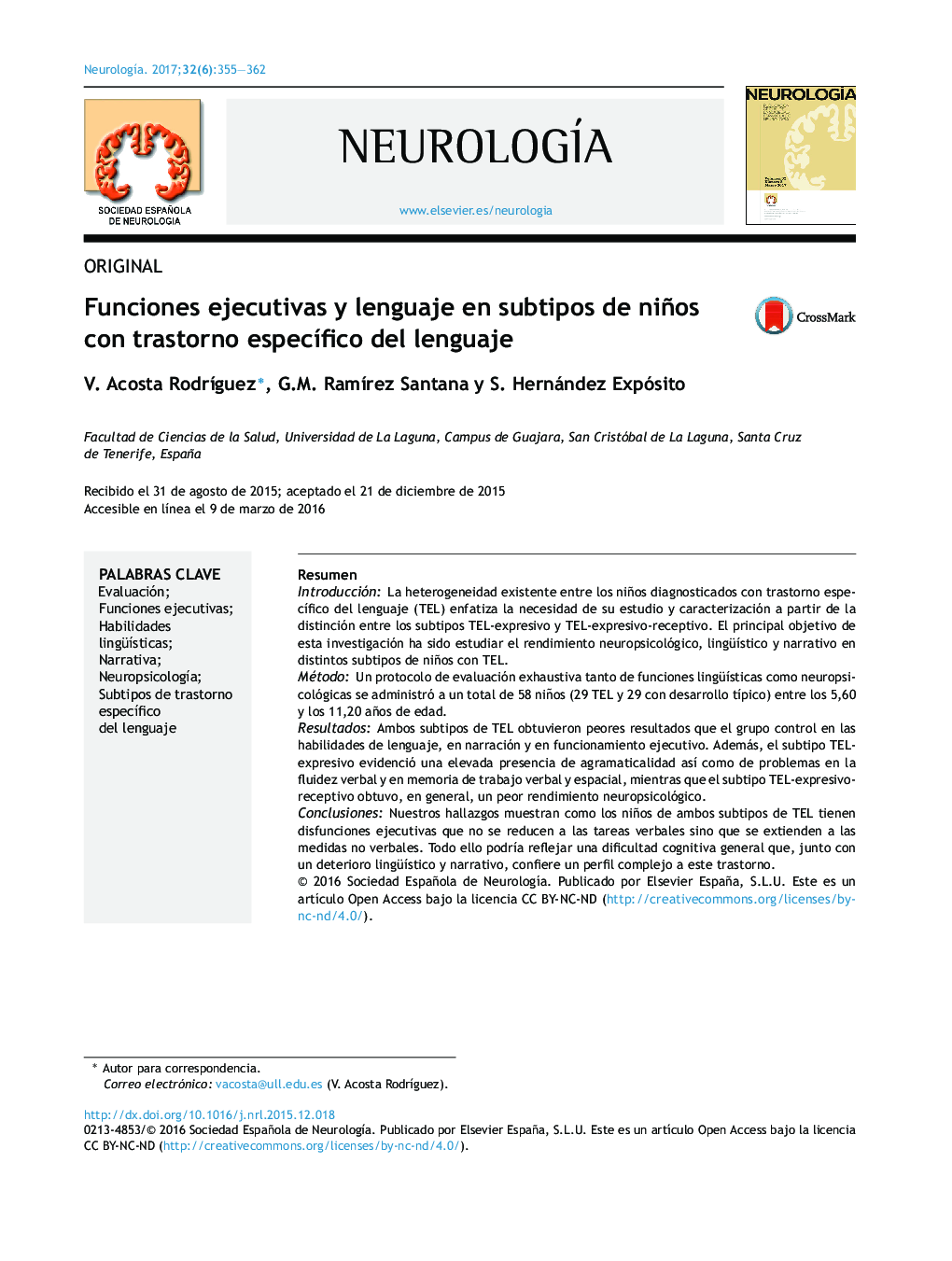| Article ID | Journal | Published Year | Pages | File Type |
|---|---|---|---|---|
| 5631712 | Neurología | 2017 | 8 Pages |
ResumenIntroducciónLa heterogeneidad existente entre los niños diagnosticados con trastorno especÃfico del lenguaje (TEL) enfatiza la necesidad de su estudio y caracterización a partir de la distinción entre los subtipos TEL-expresivo y TEL-expresivo-receptivo. El principal objetivo de esta investigación ha sido estudiar el rendimiento neuropsicológico, lingüÃstico y narrativo en distintos subtipos de niños con TEL.MétodoUn protocolo de evaluación exhaustiva tanto de funciones lingüÃsticas como neuropsicológicas se administró a un total de 58 niños (29 TEL y 29 con desarrollo tÃpico) entre los 5,60 y los 11,20 años de edad.ResultadosAmbos subtipos de TEL obtuvieron peores resultados que el grupo control en las habilidades de lenguaje, en narración y en funcionamiento ejecutivo. Además, el subtipo TEL-expresivo evidenció una elevada presencia de agramaticalidad asà como de problemas en la fluidez verbal y en memoria de trabajo verbal y espacial, mientras que el subtipo TEL-expresivo-receptivo obtuvo, en general, un peor rendimiento neuropsicológico.ConclusionesNuestros hallazgos muestran como los niños de ambos subtipos de TEL tienen disfunciones ejecutivas que no se reducen a las tareas verbales sino que se extienden a las medidas no verbales. Todo ello podrÃa reflejar una dificultad cognitiva general que, junto con un deterioro lingüÃstico y narrativo, confiere un perfil complejo a este trastorno.
IntroductionThe marked heterogeneity among children diagnosed with specific language impairment (SLI) highlights the importance of studying and describing cases based on the distinction between the expressive and receptive-expressive SLI subtypes. The main objective of this study was to examine neuropsychological, linguistic, and narrative behaviours in children with different SLI subtypes.MethodA comprehensive battery of language and neuropsychological tests was administered to a total of 58 children (29 with SLI and 29 normal controls) between 5.60 and 11.20 years old.ResultsBoth SLI subtypes performed more poorly than the control group in language skills, narrative, and executive function. Furthermore, the expressive SLI group demonstrated substantial ungrammaticality, as well as problems with verbal fluency and both verbal and spatial working memory, while the receptive-expressive SLI subtype displayed poorer neuropsychological performance in general.ConclusionsOur findings showed that children with either SLI subtype displayed executive dysfunctions that were not limited to verbal tasks but rather extended to nonverbal measures. This could reflect a global cognitive difficulty which, along with declining linguistic and narrative skills, illustrates the complex profile of this impairment.
